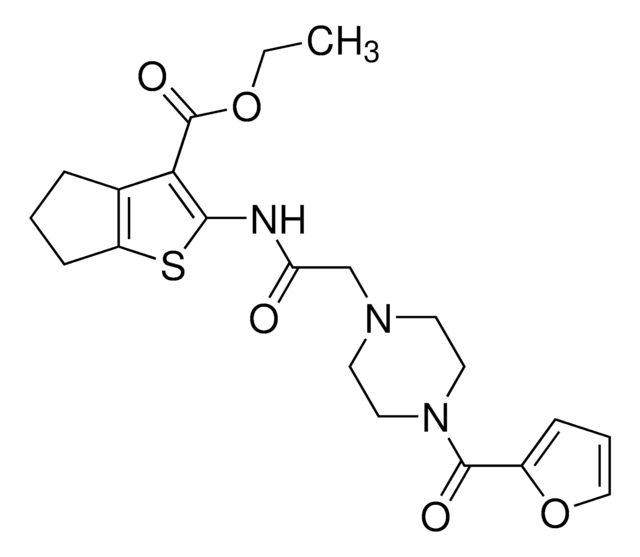MABE1785
Anti-Ubiquitinated Histone H2B (Lys123) Antibody, clone 1B3F12/A9
clone 1B3F12/A9, from mouse
Synonim(y):
Histone H2B K123 Ub1, Histone H2B.2 UbK123
About This Item
Polecane produkty
pochodzenie biologiczne
mouse
Poziom jakości
forma przeciwciała
purified immunoglobulin
rodzaj przeciwciała
primary antibodies
klon
1B3F12/A9, monoclonal
reaktywność gatunkowa
yeast, human
opakowanie
antibody small pack of 25 μg
metody
ChIP: suitable
western blot: suitable
izotyp
IgG1κ
numer dostępu NCBI
Warunki transportu
ambient
docelowa modyfikacja potranslacyjna
unmodified
informacje o genach
Saccharomyces cerevisiae ... Htb2(852284)
human ... H2BC1(255626)
Opis ogólny
Specyficzność
Immunogen
Zastosowanie
Epigenetics & Nuclear Function
Chromatin Immunoprecipitation (ChIP) Analysis: A representative lot detected Ubiquitinated Histone H2B (Lys123) in H2BK123ub relative to H2B at the coding sequence of the SPA2 gene in budding yeast (relative to WT) (Courtesy of Fred van Leeuwen, Ph.D., Division of Gene Regulation B4, The Netherlands Cancer Institute Plesmanlaan 121, Amsterdam Netherlands).
Jakość
Western Blotting Analysis: 2 µg/mL of this antibody detected Ubiquitinated Histone H2B (Lys123) in HeLa cell acid extract.
Opis wartości docelowych
Postać fizyczna
Przechowywanie i stabilność
Inne uwagi
Oświadczenie o zrzeczeniu się odpowiedzialności
Nie możesz znaleźć właściwego produktu?
Wypróbuj nasz Narzędzie selektora produktów.
Kod klasy składowania
12 - Non Combustible Liquids
Klasa zagrożenia wodnego (WGK)
WGK 1
Temperatura zapłonu (°F)
does not flash
Temperatura zapłonu (°C)
does not flash
Certyfikaty analizy (CoA)
Poszukaj Certyfikaty analizy (CoA), wpisując numer partii/serii produktów. Numery serii i partii można znaleźć na etykiecie produktu po słowach „seria” lub „partia”.
Masz już ten produkt?
Dokumenty związane z niedawno zakupionymi produktami zostały zamieszczone w Bibliotece dokumentów.
Nasz zespół naukowców ma doświadczenie we wszystkich obszarach badań, w tym w naukach przyrodniczych, materiałoznawstwie, syntezie chemicznej, chromatografii, analityce i wielu innych dziedzinach.
Skontaktuj się z zespołem ds. pomocy technicznej